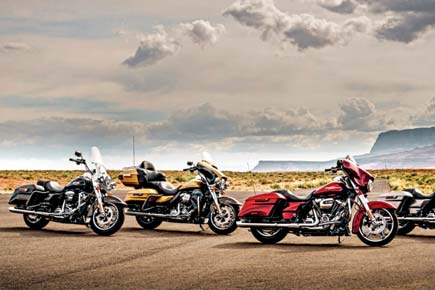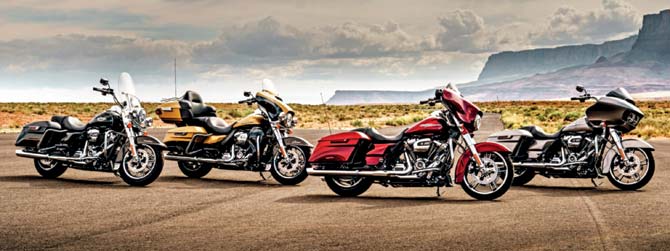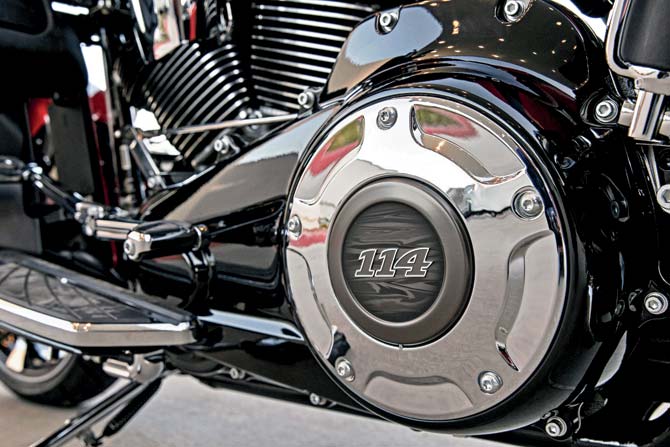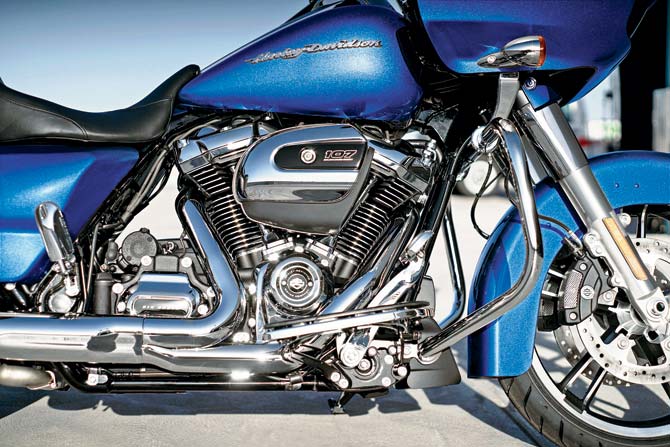We were invited by Harley-Davidson to Tacoma, USA, to ride their 2017 touring range with the new Milwaukee-Eight engines, which promises more powerful engines


ADVERTISEMENT
There are three versions of the Milwaukee-Eight, named after the V-twin’s doubled number of valves. The basic Milwaukee-Eight 107 gets its larger 107-cubic inch (1,745cc) capacity from a larger bore and an unchanged 111.1-mm stroke, gaining a new oil-cooling system around its cylinder-heads at the same time. The Ultra Classic uses a liquid-cooled version, featuring small radiators in the fairing lowers, as it did with the Twin Cam 103 unit. The exotic CVO models are powered by a larger Milwaukee-Eight 114 engine whose dimensions of 102 x 114.3 mm stretch the capacity to 1,868 cc.

The 114 cubic-inch Milwaukee-Eight churns out 168 Nm of twist
As in Project Rushmore, the engine changes were made in response to the feedback received from existing H-D riders who demanded not only more power and cooler running, but also reduced vibration and width.

The 107 cubic-inch engine produces 151 Nm of torque. Pics/Harley Davidson
The Milwaukee-Eight design delivered all that, with the four-valve layout’s improved flow being most responsible for the extra performance. There is roughly 10 per cent more torque for a good chunk of the rev-range, according to H-D, with a peak torque figure of 150 Nm at 3,250 revolutions per minute against the Twin Cam unit’s 138 Nm. The reduced vibration comes from a new balancer shaft, located low down at the front and carefully designed to achieve the right compromise between increased comfort and retained character.
According to Harley, that meant 75 per cent less vibration at idle; and the change was obvious as soon as we turned on the keyless ignition with the big chromed knob, and fired up the engine. That famous potato-potato exhaust sound was still audible on blipping the throttle. However, the Milwaukee-Eight idles at a lower 8,500 RPM (from 1,000 RPM), thus contributing to its cooler running.
A further claimed benefit is that fuel consumption is typically improved by seven per cent. With no change to the 22.7-litre tank capacity, that should give a comparable boost to range, with owners typically averaging 6.0 litres/100 km or better, was already over 300 km.
At 376 kg ready to roll, the Glide is a heavy bike but its seat is low at just 685 mm, and we found it well balanced and respectably manageable.
It also handled very well, helped by the new Showa suspension that is the other part of the 2017 Touring family update. Up front all the models get new 49-mm “Dual Bending Valve” forks, with improved cartridge-style damping. The rear shocks have larger pistons, and replace the old units’ air assistance with a hydraulic remote preload adjuster.
Overall, this revamped Street Glide Special didn’t feel dramatically different from its predecessor, but its improvements were certainly worthwhile.
This more powerful, smoother, cooler running, more refined, better-suspended machine is a carefully considered, thoughtfully implemented response that should keep the Glide popular for a few more years yet.
Road King
The most resolutely traditional of Harley’s Touring family is arguably the most versatile, because along with its white-wall tyres and soft panniers the Road King has a screen that unclips in seconds to turn this 1950s-style tourer into a naked cruiser.
For riders willing to trade a little retro style for practicality, the standard Road King is otherwise identical and slightly less expensive.
Road Glide Special
There’s something unmistakably old-school about the Road Glide Special, recently restored to Harley’s range complete with Mount Rushmore modifications, and now updated with the oil-cooled Milwaukee-Eight 107 engine. We found that despite Harley’s triple-vent system the Road Glide’s low screen generated even more of the noisy, audio-drowning turbulence that is a frequent bagger drawback.
CVO Street Glide
The Custom Vehicle Operations machines now get that larger 114-cubic inch V-twin with even greater torque than before. Of course, the 114 is much more refined than the 107.
It also cruises more effortlessly; the slightest twist of the throttle has it surging forward with alacrity and it definitely has an edge over the 107. The liquid cooling keeps the temperature down to better effect.
 Subscribe today by clicking the link and stay updated with the latest news!" Click here!
Subscribe today by clicking the link and stay updated with the latest news!" Click here!






